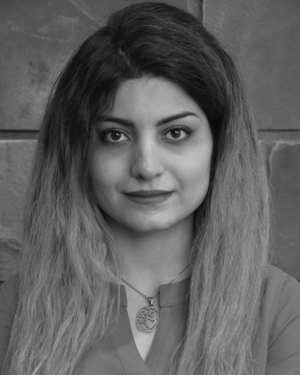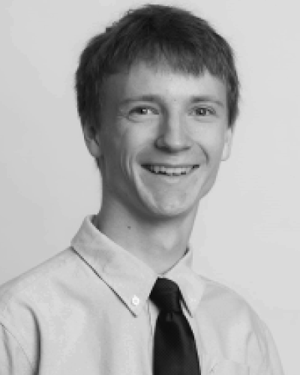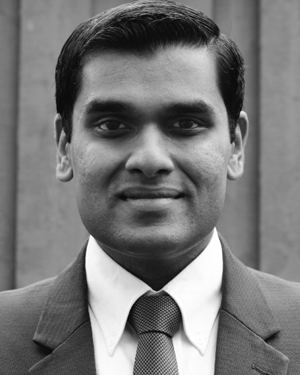Abstract:
This article presents a highly compact metafilm structure with two closely spaced and independently controlled shielding bands. The constituent unit cell is a composite o...Show MoreMetadata
Abstract:
This article presents a highly compact metafilm structure with two closely spaced and independently controlled shielding bands. The constituent unit cell is a composite of two different single-band metafilm unit cells realized by the application of a meandered-loop resonator and a mu-negative and near-zero (MNNZ) metamaterial liner, respectively, to a metallic disc resonator. Both liners introduce frequency-reduced resonances resulting in highly subwavelength unit cells. The composite dual-band unit cell undergoes resonances at sizes of λ0/10 and λ0/8 in two operating bands, where it exhibits a fano-shaped reflection profile. The unit cells are closely packed and constructed on a single metallic layer, resulting in a compact and low-profile metafilm design. Furthermore, due to the use of two separate and noninteracting resonance mechanisms, the operating bands are highly selective, can be spaced very close to each other, and may be controlled independently through the design of the individual meandering and MNNZ elements. We present simulation data, extraction of susceptibility tensors using generalized sheet-transition conditions (GSTCs) as well as experiments confirming a dual-band, polarization-selective shielding response using a compact metafilm structure measuring 1.3λ0 × 1.7λ0 at the lower band and 1.7λ0 × 2.3λ0 at the upper frequency band. The proposed design remains nearly transparent at other frequencies and/or for the orthogonal polarization.
Published in: IEEE Transactions on Antennas and Propagation ( Volume: 68, Issue: 3, March 2020)
Funding Agency:

Edward S. Rogers Sr. Department of Electrical and Computer Engineering, University of Toronto, Toronto, Canada
Elham Baladi (S’15) received the B.S. degree in electrical engineering (communications) from the Iran University of Science and Technology, Tehran, Iran, in 2013, and the Ph.D. degree from the University of Alberta, Edmonton, AB, Canada, in 2019.
She is currently a Post-Doctoral Fellow with the University of Toronto, Toronto, ON, Canada. Her current research interests include antenna theory, metasurfaces, extraordinary tra...Show More
Elham Baladi (S’15) received the B.S. degree in electrical engineering (communications) from the Iran University of Science and Technology, Tehran, Iran, in 2013, and the Ph.D. degree from the University of Alberta, Edmonton, AB, Canada, in 2019.
She is currently a Post-Doctoral Fellow with the University of Toronto, Toronto, ON, Canada. Her current research interests include antenna theory, metasurfaces, extraordinary tra...View more

Department of Electrical and Computer Engineering, University of Alberta, Edmonton, Canada
Mitchell Semple (S’17) received the B.S. degree in electrical engineering (nanoengineering option) from the University of Alberta, Edmonton, AB, Canada, in 2016, where he is currently pursuing the Ph.D. degree.
His current research interests include metasurfaces, near-IR and THz subdiffraction imaging, optical nonlinear effects, plasmonics, and nanofabrication techniques.
Mr. Semple was a recipient of the Natural Sciences a...Show More
Mitchell Semple (S’17) received the B.S. degree in electrical engineering (nanoengineering option) from the University of Alberta, Edmonton, AB, Canada, in 2016, where he is currently pursuing the Ph.D. degree.
His current research interests include metasurfaces, near-IR and THz subdiffraction imaging, optical nonlinear effects, plasmonics, and nanofabrication techniques.
Mr. Semple was a recipient of the Natural Sciences a...View more

Department of Electrical and Computer Engineering, University of Alberta, Edmonton, Canada
Ashwin K. Iyer (S’01–M’09–SM’14) received the B.A.Sc. (Hons.), M.A.Sc., and Ph.D. degrees in electrical engineering from the University of Toronto, Toronto, ON, Canada, in 2001, 2003, and 2009, respectively, with a focus on the discovery and development of the negative-refractive-index transmissionline (NRI-TL) approach to metamaterial design and the realization of metamaterial lenses for free-space microwave subdiffracti...Show More
Ashwin K. Iyer (S’01–M’09–SM’14) received the B.A.Sc. (Hons.), M.A.Sc., and Ph.D. degrees in electrical engineering from the University of Toronto, Toronto, ON, Canada, in 2001, 2003, and 2009, respectively, with a focus on the discovery and development of the negative-refractive-index transmissionline (NRI-TL) approach to metamaterial design and the realization of metamaterial lenses for free-space microwave subdiffracti...View more

Edward S. Rogers Sr. Department of Electrical and Computer Engineering, University of Toronto, Toronto, Canada
Elham Baladi (S’15) received the B.S. degree in electrical engineering (communications) from the Iran University of Science and Technology, Tehran, Iran, in 2013, and the Ph.D. degree from the University of Alberta, Edmonton, AB, Canada, in 2019.
She is currently a Post-Doctoral Fellow with the University of Toronto, Toronto, ON, Canada. Her current research interests include antenna theory, metasurfaces, extraordinary transmission, frequency-selective surfaces, transmit/reflect array antennas, and antenna radiation-pattern shaping.
Dr. Baladi has been a Student Member of the IEEE Northern Canada Section since 2013 and the IEEE Antennas and Propagation Society since 2015. She was a recipient of the University of Alberta Doctoral Recruitment Scholarship, the Alberta Innovates Technology Futures Graduate Student Scholarship, the IEEE AP-S Doctoral Research Award, and two honorable mention awards in the student-paper competitions of the 2016 and 2017 IEEE AP-S Symposia.
Elham Baladi (S’15) received the B.S. degree in electrical engineering (communications) from the Iran University of Science and Technology, Tehran, Iran, in 2013, and the Ph.D. degree from the University of Alberta, Edmonton, AB, Canada, in 2019.
She is currently a Post-Doctoral Fellow with the University of Toronto, Toronto, ON, Canada. Her current research interests include antenna theory, metasurfaces, extraordinary transmission, frequency-selective surfaces, transmit/reflect array antennas, and antenna radiation-pattern shaping.
Dr. Baladi has been a Student Member of the IEEE Northern Canada Section since 2013 and the IEEE Antennas and Propagation Society since 2015. She was a recipient of the University of Alberta Doctoral Recruitment Scholarship, the Alberta Innovates Technology Futures Graduate Student Scholarship, the IEEE AP-S Doctoral Research Award, and two honorable mention awards in the student-paper competitions of the 2016 and 2017 IEEE AP-S Symposia.View more

Department of Electrical and Computer Engineering, University of Alberta, Edmonton, Canada
Mitchell Semple (S’17) received the B.S. degree in electrical engineering (nanoengineering option) from the University of Alberta, Edmonton, AB, Canada, in 2016, where he is currently pursuing the Ph.D. degree.
His current research interests include metasurfaces, near-IR and THz subdiffraction imaging, optical nonlinear effects, plasmonics, and nanofabrication techniques.
Mr. Semple was a recipient of the Natural Sciences and Engineering Research Council (NSERC) Canada Graduate Scholarship (master’s) and currently holds the NSERC Postgraduate Scholarship (doctoral). He also holds the Alberta Innovates Graduate Student Scholarship. He is currently serving the Secretary for the IEEE Northern Canada Section Joint Chapter of the IEEE AP-S and MTT-S.
Mitchell Semple (S’17) received the B.S. degree in electrical engineering (nanoengineering option) from the University of Alberta, Edmonton, AB, Canada, in 2016, where he is currently pursuing the Ph.D. degree.
His current research interests include metasurfaces, near-IR and THz subdiffraction imaging, optical nonlinear effects, plasmonics, and nanofabrication techniques.
Mr. Semple was a recipient of the Natural Sciences and Engineering Research Council (NSERC) Canada Graduate Scholarship (master’s) and currently holds the NSERC Postgraduate Scholarship (doctoral). He also holds the Alberta Innovates Graduate Student Scholarship. He is currently serving the Secretary for the IEEE Northern Canada Section Joint Chapter of the IEEE AP-S and MTT-S.View more

Department of Electrical and Computer Engineering, University of Alberta, Edmonton, Canada
Ashwin K. Iyer (S’01–M’09–SM’14) received the B.A.Sc. (Hons.), M.A.Sc., and Ph.D. degrees in electrical engineering from the University of Toronto, Toronto, ON, Canada, in 2001, 2003, and 2009, respectively, with a focus on the discovery and development of the negative-refractive-index transmissionline (NRI-TL) approach to metamaterial design and the realization of metamaterial lenses for free-space microwave subdiffraction imaging.
He is currently an Associate Professor with the Department of Electrical and Computer Engineering, University of Alberta, Edmonton, AB, Canada, where he leads a team of graduate students investigating novel RF/microwave circuits and techniques, fundamental electromagnetic theory, antennas, plasmonic devices, and engineered metamaterials, with an emphasis on their applications to microwave and optical devices, defense technologies, and biomedicine. He has coauthored a number of highly cited articles and book chapters on the subject of metamaterials.
Dr. Iyer is a Registered Member of the Association of Professional Engineers and Geoscientists of Alberta. He was a recipient of the IEEE AP-S R. W. P. King Award in 2008, the IEEE AP-S Donald G. Dudley Jr. Undergraduate Teaching Award in 2015, the University of Alberta Provost’s Award for Early Achievement of Excellence in Undergraduate Teaching in 2014, and the University of Alberta’s Rutherford Award for Excellence in Undergraduate Teaching in 2018. His students are the recipients of several major national and international awards for their research. He serves as a Co-Chair for the IEEE Northern Canada Section’s award-winning joint chapter of the AP-S and MTT-S societies and is a member of the IEEE AP-S Education Committee. He was an Associate Editor for the IEEE Transactions on Antennas and Propagation from 2012 to 2018 and now serves as a Track Editor. He is also the Guest Editor for the IEEE Transactions on Antennas and Propagation Special Issue on Recent Advances in Metamaterials and Metasurfaces.
Ashwin K. Iyer (S’01–M’09–SM’14) received the B.A.Sc. (Hons.), M.A.Sc., and Ph.D. degrees in electrical engineering from the University of Toronto, Toronto, ON, Canada, in 2001, 2003, and 2009, respectively, with a focus on the discovery and development of the negative-refractive-index transmissionline (NRI-TL) approach to metamaterial design and the realization of metamaterial lenses for free-space microwave subdiffraction imaging.
He is currently an Associate Professor with the Department of Electrical and Computer Engineering, University of Alberta, Edmonton, AB, Canada, where he leads a team of graduate students investigating novel RF/microwave circuits and techniques, fundamental electromagnetic theory, antennas, plasmonic devices, and engineered metamaterials, with an emphasis on their applications to microwave and optical devices, defense technologies, and biomedicine. He has coauthored a number of highly cited articles and book chapters on the subject of metamaterials.
Dr. Iyer is a Registered Member of the Association of Professional Engineers and Geoscientists of Alberta. He was a recipient of the IEEE AP-S R. W. P. King Award in 2008, the IEEE AP-S Donald G. Dudley Jr. Undergraduate Teaching Award in 2015, the University of Alberta Provost’s Award for Early Achievement of Excellence in Undergraduate Teaching in 2014, and the University of Alberta’s Rutherford Award for Excellence in Undergraduate Teaching in 2018. His students are the recipients of several major national and international awards for their research. He serves as a Co-Chair for the IEEE Northern Canada Section’s award-winning joint chapter of the AP-S and MTT-S societies and is a member of the IEEE AP-S Education Committee. He was an Associate Editor for the IEEE Transactions on Antennas and Propagation from 2012 to 2018 and now serves as a Track Editor. He is also the Guest Editor for the IEEE Transactions on Antennas and Propagation Special Issue on Recent Advances in Metamaterials and Metasurfaces.View more


